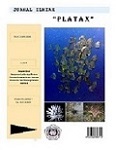Amplitude of the Tidal Harmonic Constituents M2, S2, K1, and O1 in Waters Around the City of Bitung in North Sulawesi
DOI:
https://doi.org/10.35800/jip.1.3.2013.2569Abstract
ABSTRACT
This study was conducted to describe the amplitude of the tidal harmonic constituents M2, S2, K1, and O1 in waters around the city of Bitung in North Sulawesi. Calculations performed using the admiralty method. Based on calculations, it was found that the average amplitude of M2 is 34.8, S2 is 22.5, K1 is 20.3, and O1 is 11.7. The tidal behaviour in the study area is mixed tide predominant semidiurnal, with average Formzahl number of about 0.6.
Keywords : amplitude, tidal, Bitung
Â
ABSTRAK
Penelitian ini dilakukan untuk menggambarkan amplitudo pasut harmonik M2, S2, K1, dan O1 di perairan sekitar kota Bitung di Sulawesi Utara. Perhitungan dilakukan dengan menggunakan metode admiralty. Berdasarkan hasil perhitungan, diketahui bahwa rata-rata amplitudo M2 adalah 34,8, S2 adalah 22,5, K1 adalah 20,3, dan O1 adalah 11,7. Perilaku pasang surut di daerah penelitian adalah air campuran dominan semidiurnal, dengan rata-rata jumlah Formzahl sekitar 0,6.
Kata kunci : amplitudo, pasut, Bitung
Downloads
Published
How to Cite
Issue
Section
License
COPYRIGHT
Authors who publish with this journal agree to the following terms:
Authors hold their copyright and grant this journal the privilege of first publication, with the work simultaneously licensed under a Creative Commons Attribution License that permits others to impart the work with an acknowledgment of the work's origin and initial publication by this journal.
Authors can enter into separate or additional contractual arrangements for the non-exclusive distribution of the journal's published version of the work (for example, post it to an institutional repository or publish it in a book), with an acknowledgment of its underlying publication in this journal.
Authors are permitted and encouraged to post their work online (for example, in institutional repositories or on their website) as it can lead to productive exchanges, as well as earlier and greater citation of the published work (See The Effect of Open Access).




















